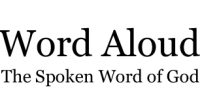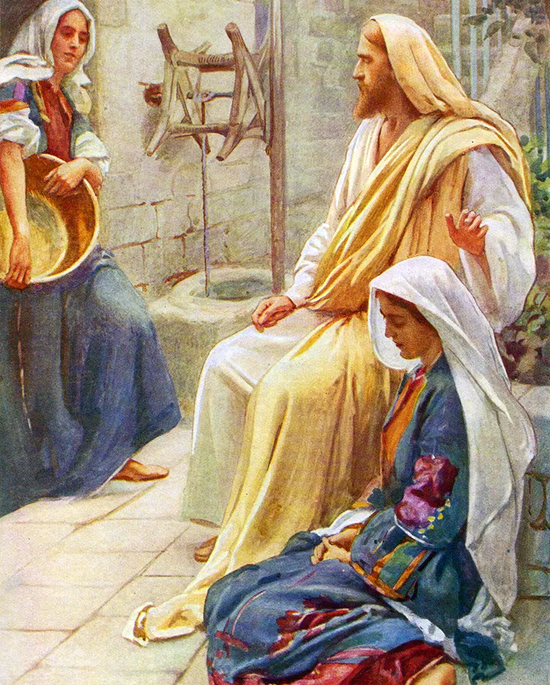Christian Art | A Boy At Prayer | Via Dolorosa
Office Of Readings | Thursday, Lent Week 5 | A Reading From ‘Lumen Gentium’, The Second Vatican Council’s Dogmatic Constitution On The Church
‘The Church, the visible sacrament of saving unity.’
This powerful text from Lumen Gentium, the Dogmatic Constitution on the Church from the Second Vatican Council, invites us to reflect on who the Church truly is — not just what she does or how she’s organized, but her deepest identity as the people of God, drawn together by grace, and sent into the world to be a sign of unity and an instrument of salvation.
A Covenant Written In The Heart
The reading opens by recalling the words of the prophet Jeremiah, who foretells a time when God will make a new covenant with His people — one not based on external law, but on an inward transformation: ‘I will plant my law within them and inscribe it in their hearts.’ This prophecy finds its fulfilment in Jesus Christ, who establishes a new covenant not written on tablets of stone but in the very hearts of those who believe, through the gift of the Holy Spirit.
This is a covenant that brings about not just personal transformation but a new community. Christ, through his death and resurrection, brings into being a new people — not defined by ethnic or national identity, but by faith. Whether Jew or Gentile, all who are born ‘not from the flesh but from water and the Holy Spirit’ become part of this messianic people, the Church.
The Church: A New People Of God
One of the central insights of Lumen Gentium is that the Church is first and foremost a people — the new People of God. This isn’t simply a metaphor. Just as ancient Israel was chosen and called into a covenant relationship with God, the Church is chosen and called in Christ. Her members are described in the language of Scripture: ‘a chosen race, a royal priesthood, a holy nation’ (1 Peter 2:9).
What sets this people apart is not privilege or superiority, but their calling to witness to God’s love in the world. They are marked by a dignity that comes from their identity as children of God. And they are empowered by the Holy Spirit, who dwells within them not just individually, but collectively — making the Church a temple of the living God.
At the heart of their way of life is the commandment Jesus gave at the Last Supper: ‘Love one another as I have loved you.’ This is not a general encouragement to kindness; it is a radical call to self-giving love — the kind of love Christ demonstrated on the Cross. This is the law written on the heart in the new covenant, and it is the heart of the Church’s identity.
A Pilgrim People Moving Toward The Kingdom
The Church, this new People of God, does not yet live in the fullness of what she is called to be. She is on pilgrimage — journeying through the history of the world, moving toward the fullness of God’s kingdom. That kingdom, Lumen Gentium reminds us, has already begun on earth, but it will only be completed when Christ comes again in glory. In the meantime, the Church lives in hope.
This hope is not passive. It is deeply active. The Church is called to be a sign of the kingdom’s coming — to live now in such a way that her life points toward what God desires for all creation: unity, justice, peace, and love. Even though the Church may often appear small — ‘a tiny flock’ — she carries within herself the promise of something far greater: a new heaven and a new earth.
The Church As Sacrament
One of the most striking and beautiful teachings of this passage is that the Church is ‘the visible sacrament’ of unity and salvation. A sacrament, in the Catholic tradition, is a visible sign of invisible grace — a concrete reality that makes God’s presence real in the world. When the Council calls the Church a sacrament, it means she is not just a human organization or a spiritual club, but a living sign that reveals God’s intention to draw all people to Himself.
This doesn’t mean the Church is perfect. She is made up of sinners, still journeying, still being purified. But despite her flaws, she is the instrument Christ has chosen to reach the world. Through her preaching, her sacraments, her witness of service and charity, the Church carries out the mission Christ gave her: to be light for the world and salt for the earth.
Jesus Christ: Source And Goal Of The Church’s Life
At every step, the Church remains rooted in Christ. Jesus is her head. He is the one who ‘purchased’ her with his own blood. He fills her with his Spirit and gives her all that she needs to live out her calling. Christ is the source of her unity, her peace, her mission, and her hope.
To say the Church is a ‘sacrament of unity’ is to say that Christ continues, through her, to draw humanity together — across every line of division — into one people. And to say she is a ‘sacrament of salvation’ is to say that through her, Christ continues to offer his grace to the world.

A Reading From Lumen Gentium, The Second Vatican Council’s Dogmatic Constitution On The Church
See, the days are coming, says the Lord, when I will make a new covenant with the house of Israel and the house of Judah… I will plant my law within them and inscribe it in their hearts. I will be their God and they shall be my people… All shall know me, from the least to the greatest, says the Lord.
It was Christ who established this new covenant, the new testament in his blood, calling into being, from Jews and Gentiles, a people that was to form a unity, not in human fashion but in the Spirit, as the new people of God. Those who believe in Christ, reborn not of corruptible but of incorruptible seed through the word of the living God, not from the flesh but from water and the Holy Spirit, are constituted in the fullness of time as a chosen race, a royal priesthood, a holy nation, a people God has made his own…, once no people but now the people of God.
This messianic people has Christ as its head: Christ who was given up for our sins and rose again for our justification; bearing now the name that is above every name, he reigns in glory in heaven. His people enjoy the dignity and freedom of the children of God, in whose hearts the Holy Spirit dwells as in a temple. They have as their law the new commandment of loving as Christ himself has loved us. They have as their goal the kingdom of God, begun on earth by God himself and destined to grow until it is also brought to perfection by him at the end of time, when Christ, our life, will appear, and creation itself will be freed from slavery to corruption and take on the freedom of the glory of God’s children.
This messianic people, then, though it does not in fact embrace all mankind and often seems to be a tiny flock, is yet the enduring source of unity, hope and salvation for the whole human race. It is established by Christ as a communion of life, of love and of truth; it is also used by him as an instrument for the redemption of all, and is sent out into the whole world as the light of the world and the salt of the earth.
The Israel of old was already called the Church of God while it was on pilgrimage through the desert. So the new Israel, as it makes its way in this present age, seeking a city that is to come, a city that will remain, is also known as the Church of Christ, for he acquired it by his own blood, filled it with his Spirit, and equipped it with appropriate means to be a visible and social unity. God has called together the assembly of those who in faith look on Jesus, the author of salvation and the principle of unity and peace, and so has established the Church to be for each and all the visible sacrament of this unity which brings with it salvation.








